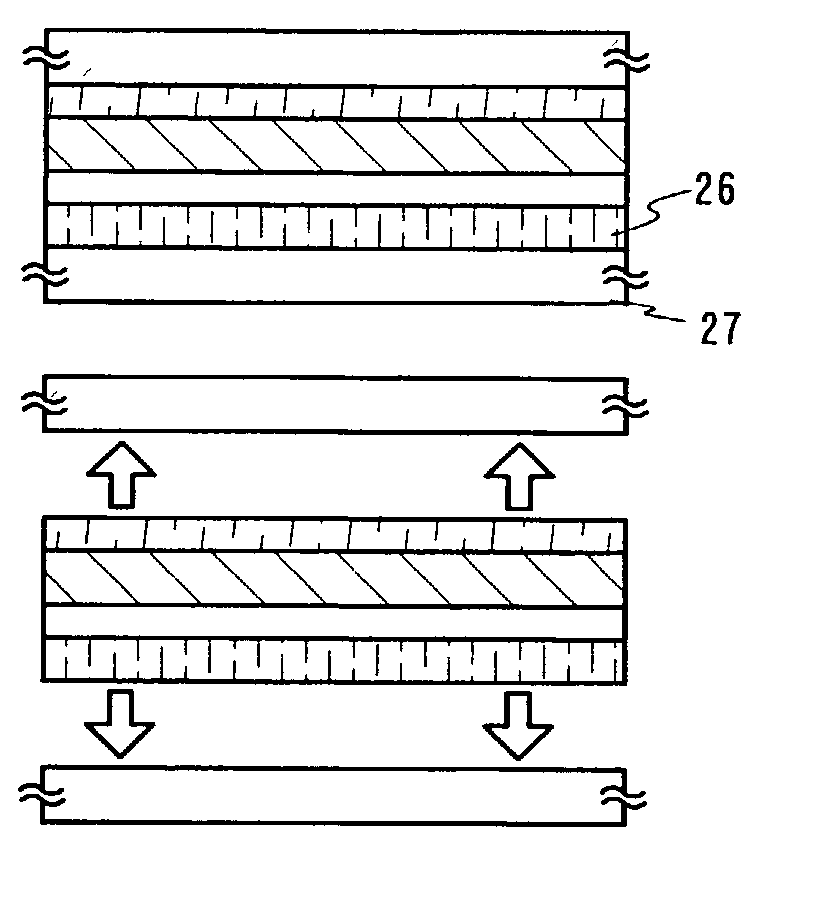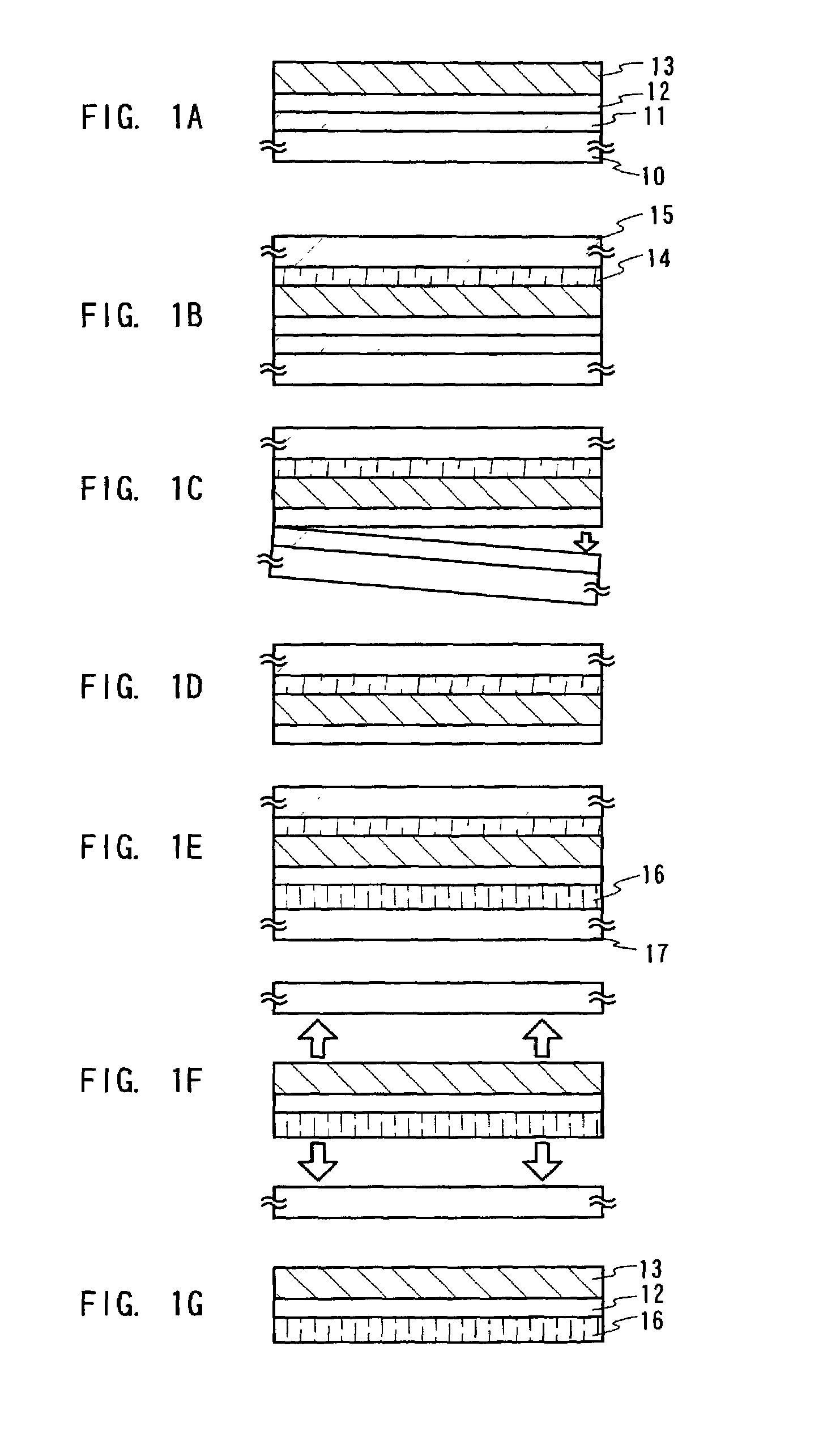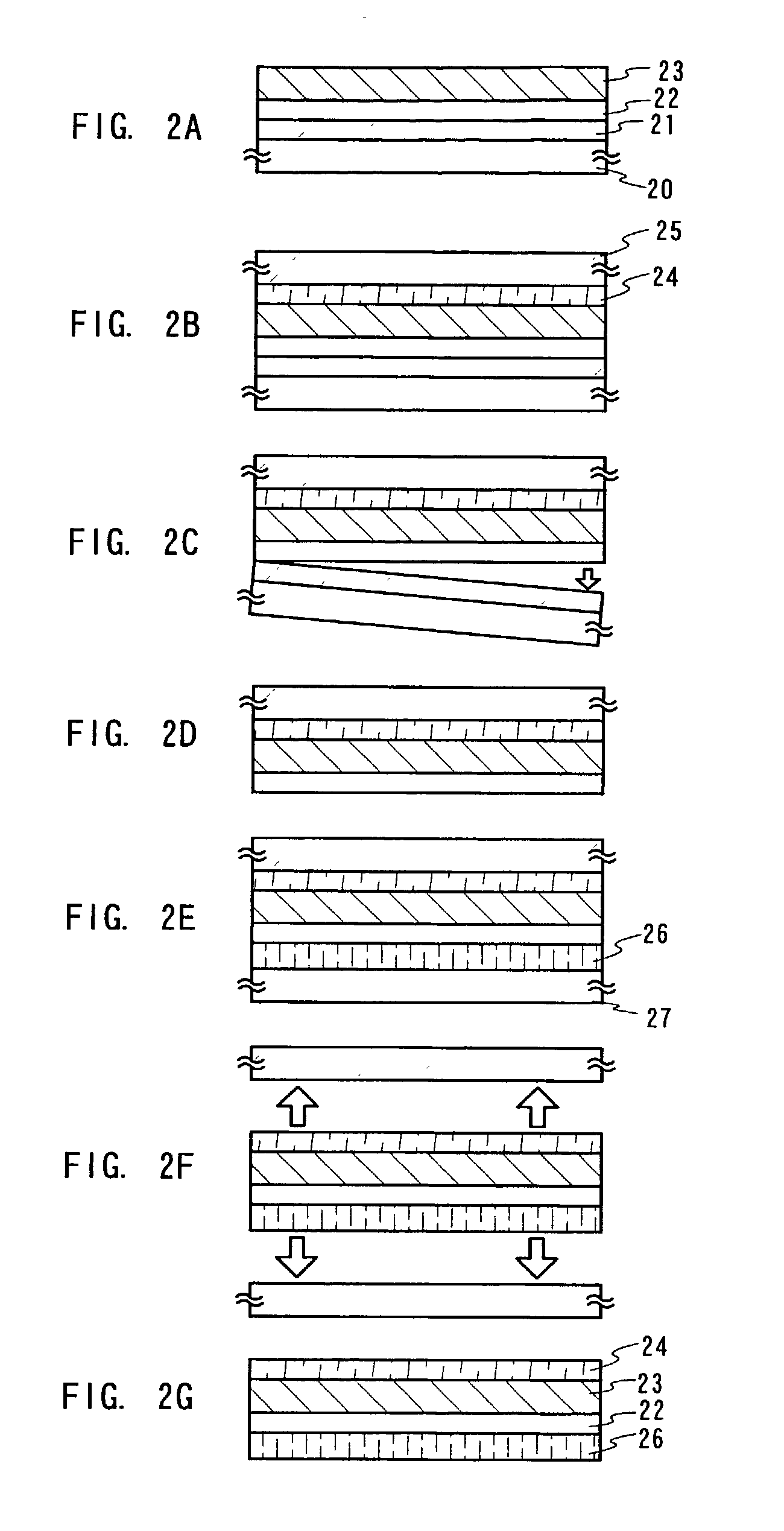Semiconductor device and method of manufacturing the same
a semiconductor and semiconductor technology, applied in the field of semiconductor devices, can solve the problems of easy cracking and heavy, glass substrates and quartz substrates are difficult to be made larger, and cannot help lowering the highest temperature of the process
- Summary
- Abstract
- Description
- Claims
- Application Information
AI Technical Summary
Benefits of technology
Problems solved by technology
Method used
Image
Examples
embodiment mode 1
[0072]The following is a brief description on a typical peeling procedure and semiconductor device manufacturing method using the present invention. The description will be given with reference to FIGS. 1A to 1G.
[0073]In FIG. 1A, reference numeral 10 denotes a first substrate, 11, a first material layer that is a nitride layer or a metal layer, 12, a second material layer that is an oxide layer, and 13, a layer to be peeled.
[0074]The first substrate 10 in FIG. 1A can be a glass substrate, a quartz substrate, a ceramic substrate, or the like. A semiconductor substrate, typically a silicon substrate, or a metal substrate, typically a stainless steel substrate, may also be used.
[0075]First, the first material layer 11 is formed on the substrate 10 as shown in FIG. 1A. The first material layer 11 may have compressive stress or tensile stress immediately after it is formed. However, it is important to use for the first material layer 11 a material which is free from peeling or other dist...
embodiment mode 2
[0096]Embodiment Mode 1 shows an example in which the second bonding member alone serves as a supporter. In this embodiment mode, an example of using the first bonding member and the second bonding member as a supporter is shown. FIGS. 2A to FIGS. 2E are roughly identical with FIGS. 1A to 1E. Therefore, detailed descriptions will be omitted here and only differences between Embodiment Mode 1 and Embodiment Mode 2 will be described.
[0097]In FIGS. 2A to 2G, reference numeral 20 denotes a first substrate, 21, a first material layer that is a nitride layer or a metal layer, 22, a second material layer that is an oxide layer, 23, a layer to be peeled, 24, a first bonding member, 25, a second substrate, 26, a second bonding member, and 27, a third substrate.
[0098]First, according to Embodiment Mode 1, there is obtained a state of FIG. 2E in the same procedure.
[0099]Here, reaction-cured adhesives, thermally-curable adhesives, photo-curable adhesives such as UV-curable adhesives, anaerobic ...
embodiment mode 3
[0109]Embodiment Mode 1 shows an example in which the second bonding member alone serves as a supporter. In this embodiment mode, an example of using the second bonding member and the third substrate as a supporter is shown. FIGS. 3A to 3E are roughly identical with FIGS. 1A to 1E. Therefore detailed descriptions will be omitted here and only differences between Embodiment Mode 1 and Embodiment Mode 2 will be described.
[0110]In FIGS. 3A to 3G, reference numeral 30 denotes a first substrate, 31, a first material layer that is a nitride layer or a metal layer, 32, a second material layer that is an oxide layer, 33, a layer to be peeled, 34, a first bonding member, 35, a second substrate, 36, a second bonding member, and 37, a third substrate.
[0111]First, according to Embodiment Mode 1, there is obtained a state of FIG. 3E in the same procedure.
[0112]The first substrate 30 can be a glass substrate, a quartz substrate, a ceramic substrate, or the like. A semiconductor substrate, typical...
PUM
| Property | Measurement | Unit |
|---|---|---|
| total thickness | aaaaa | aaaaa |
| total thickness | aaaaa | aaaaa |
| temperature | aaaaa | aaaaa |
Abstract
Description
Claims
Application Information
 Login to View More
Login to View More - R&D
- Intellectual Property
- Life Sciences
- Materials
- Tech Scout
- Unparalleled Data Quality
- Higher Quality Content
- 60% Fewer Hallucinations
Browse by: Latest US Patents, China's latest patents, Technical Efficacy Thesaurus, Application Domain, Technology Topic, Popular Technical Reports.
© 2025 PatSnap. All rights reserved.Legal|Privacy policy|Modern Slavery Act Transparency Statement|Sitemap|About US| Contact US: help@patsnap.com



